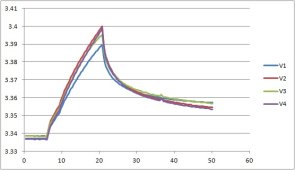87 Dream
New Member
- Joined
- Jan 10, 2022
- Messages
- 12
Not sure I understand your question but I will try to answer. Most plants I have installed have the Grid available so, depending on the inverter modes, the Bulk and Float will be at those values regardless. Yes by day Solar blending and charging takes place. At night again dependant on inverter mode the battery is at that float. Or alternatively the batteries are being cycled. I work with OEM Voltronics inverters are I'm pretty sure most guys familiar, have heard of the famous premature float bug. Having the bulk and float the same, you eliminate these said issues. Also a float charge is not as important to a LFP pack than to a Lead Acid or AGM.take that to mean you bulk and float while the sun is up, confirm?
87



